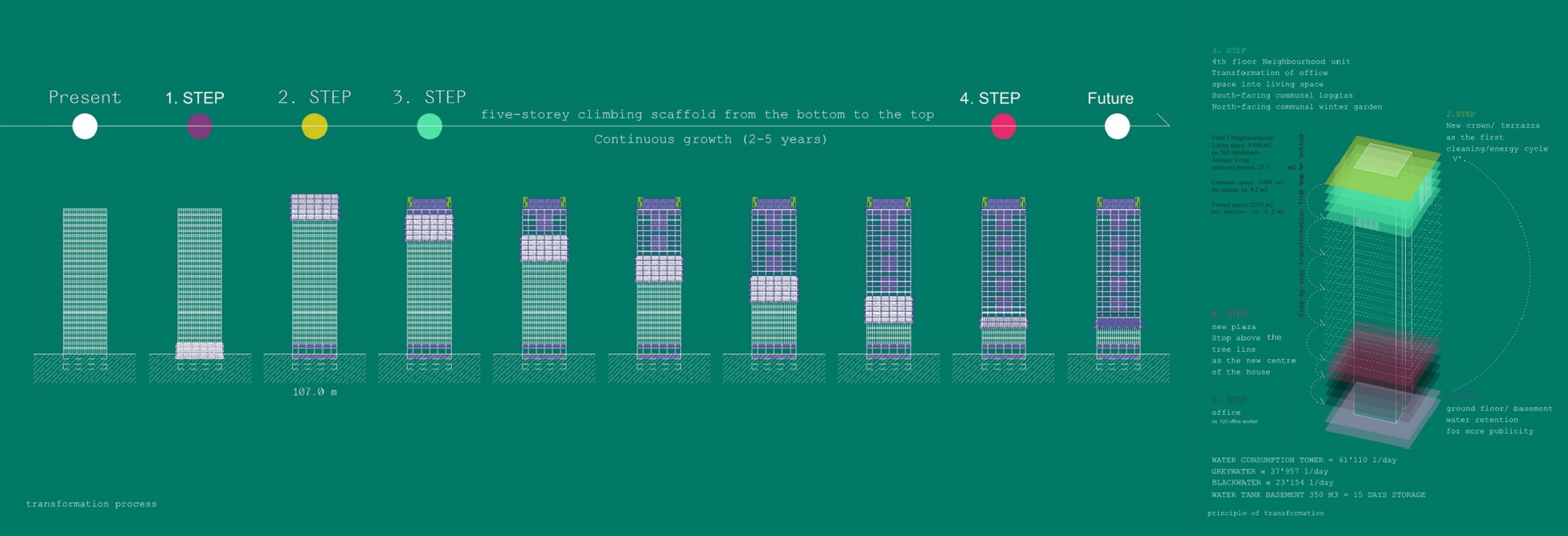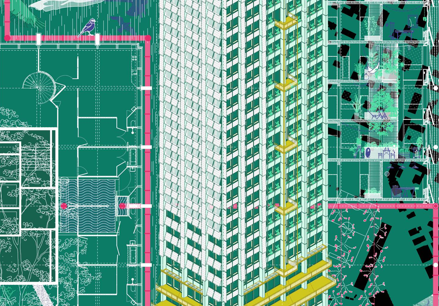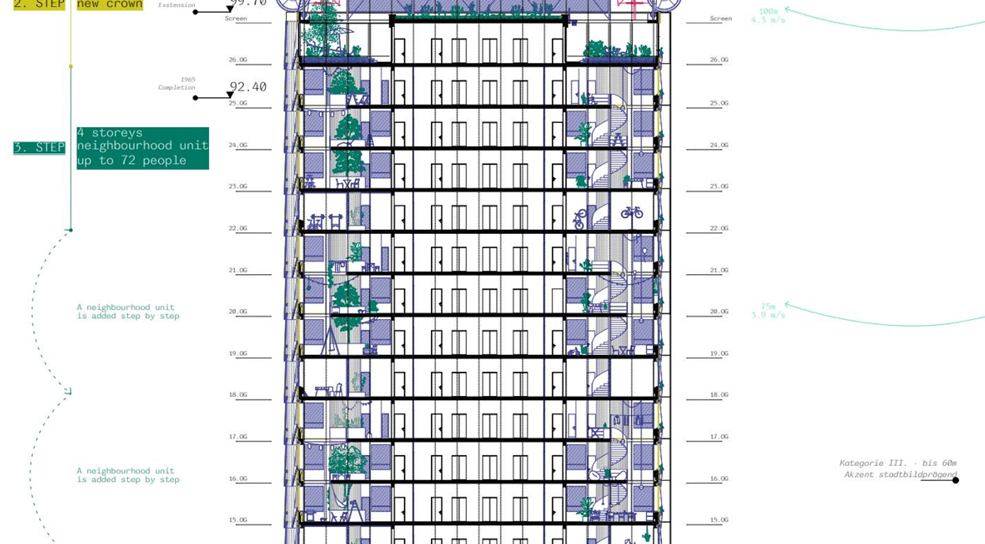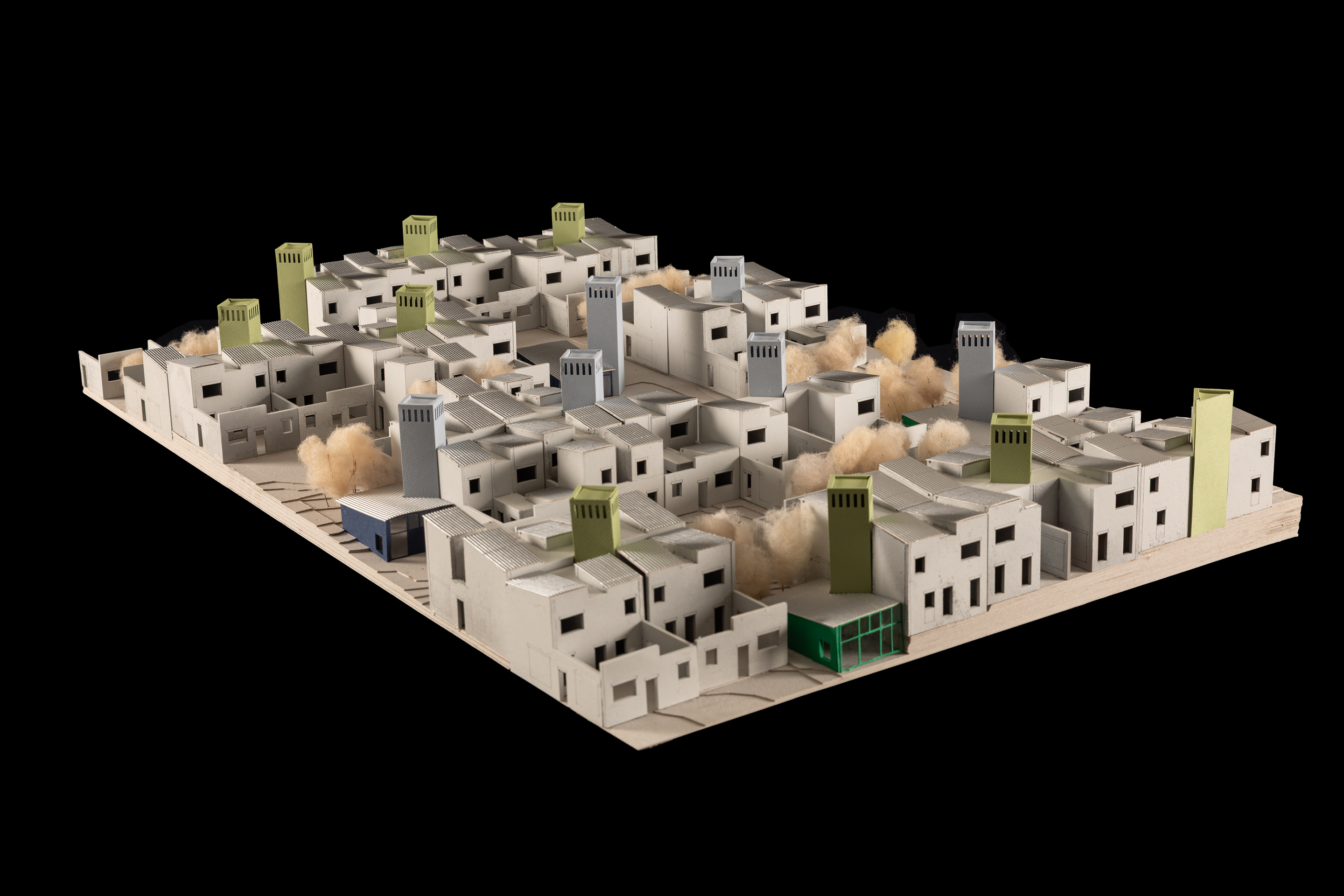
Projekt von
Yannick Fortiguerra
Begleitung
Maria Conen, David Kaufmann, Guillaume Habert, Max Maurer
High-rise buildings symbolise modernity, represent economic prowess and technological accomplishments, but must adapt to evolving social and ecological imperatives. The Sulzer high-rise, constructed as an office tower, portrayed an emblem of industrial affluence. Today, it epitomises the challenge of reimagining such monofunctional edifices for the future. The foundation for this project lies in its façade framework: it reemerges as an architectural device—the tower does not evolve from the bottom up, rather from top to bottom, mimicking a plant whose roots gradually burrow down. A steel skeleton structure reconfigures the office interiors into residential units. The transformation is also defined by principles of the circular economy: rainwater and grey water are reutilised on-site. Could this principle serve as a prototype for confronting the limitations of monofunctional office towers? Could it give rise to a system that redefines existing urban fabrics, and inspires other cities as a didactic scaffold for the future?









